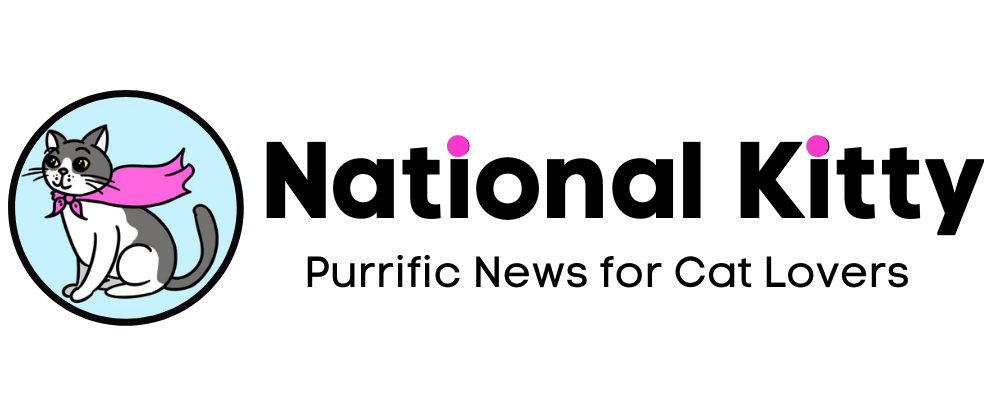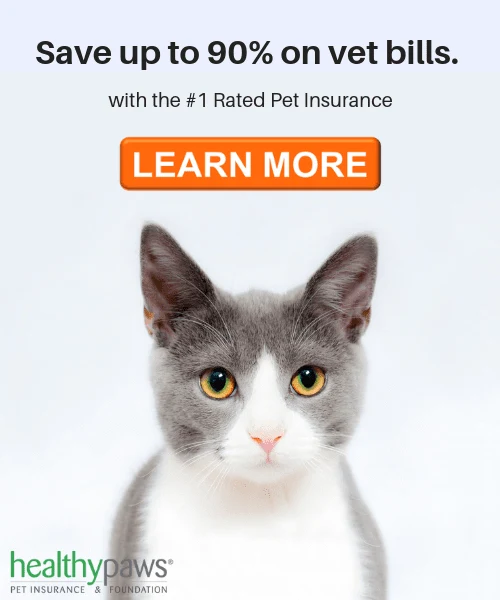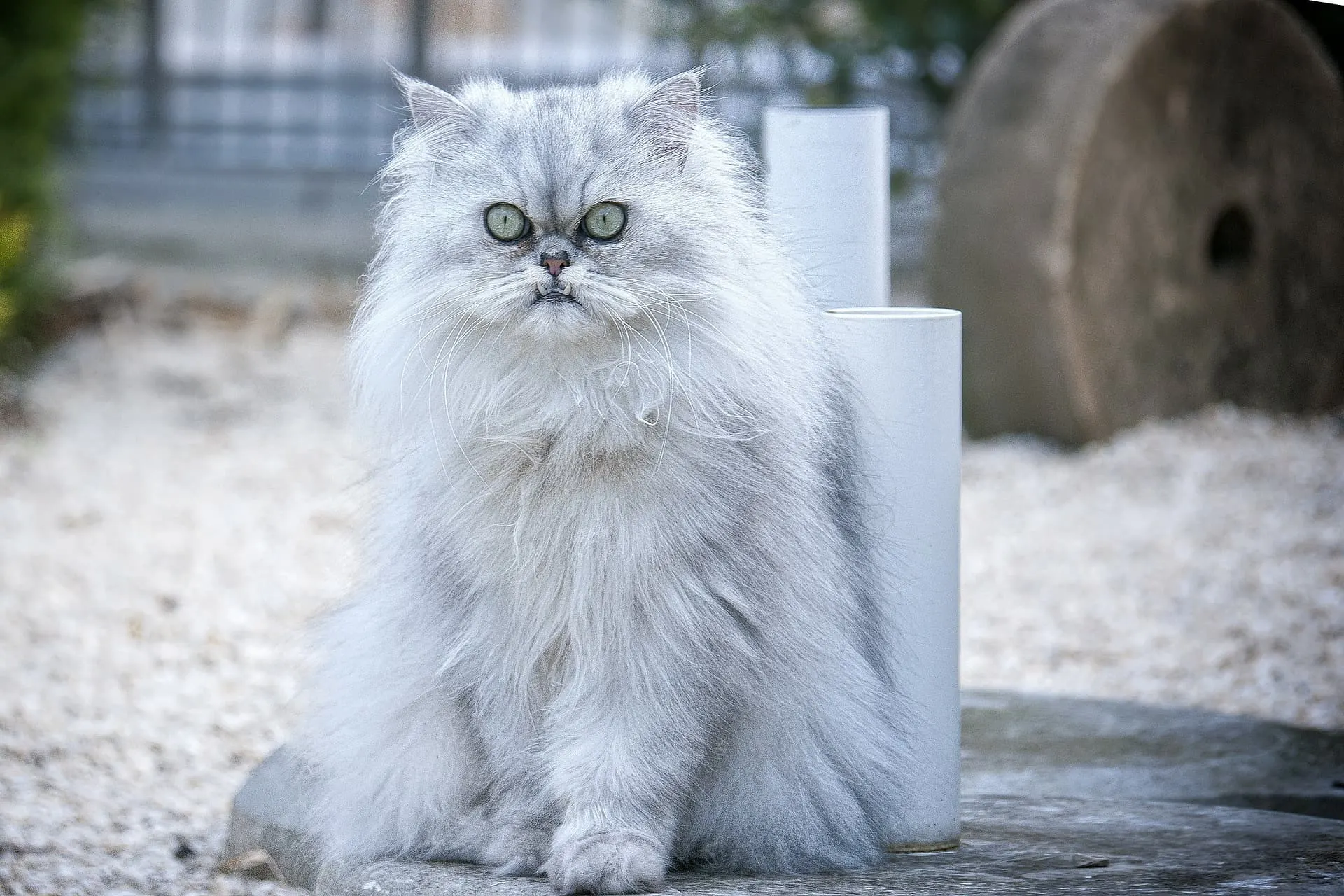Most cat owners have probably had the not unpleasant experience of hearing their cat cough up a hairball and then having to clean up the mess.
It’s never fun – not for you, but especially not for your cat. Hairballs can be troublesome if your cat has difficulty coughing them up.
But what causes hairballs and how can you prevent them? Keep reading to find out.
What Causes Hairballs?
Cats are obsessive when it comes to grooming. Cats use their tongues to remove excess fur or debris from their coat.
A cat’s tongue has these tiny barbs (called papillae) on their tongue and the barbs point away from the mouth and toward the throat.
When cats lick their coat, the barbs on their tongue help pull hair off of their coat and into their mouths. But these barbs also prevent cats from simply being able to spit the hair out, so they have to swallow the fur.
Most of the time, the hair is able to pass through the cat’s system without an issue.
But sometimes, this excess hair can irritate the cat’s throat or make them feel uncomfortable, causing the cat to vomit the fur in the form of a hairball.
SURVEY: Do You Consider Cats Family?
Your opinion matters!
Why are hairballs tube shaped?
If you’re wondering why the hairball is more tube-shaped than round (like a ball), it’s because your cat has a very narrow throat.
As they force the hairball out, it often becomes elongated when it passes through the throat.
Which types of cat are most susceptible to hairballs?
Long-haired cat breeds like Maine Coons and Persians are more susceptible to hairballs because of their long, fluffy fur.
Long haired cats in general, regardless of breed, are more likely to struggle with hairballs.
Some cats like grooming themselves more often than others, so these cats will be more prone to hairballs.
Older cats are also more prone to hairballs. This isn’t a sign of old age; it’s just that as your cat ages, they get better at grooming themselves.
So, if you’ve had your cat since kitten-hood and they didn’t have trouble with hairballs as a young cat and they do as an old cat, you can attribute that to experience.
Symptoms of Hairballs
When a cat is trying to vomit up a hairball, they can make some ghastly noises that sound like they’re gagging or choking on something.
Don’t be alarmed – usually after a few seconds of gagging, the cat is able to heave up the hairball.
If you notice any of the following symptoms, it could be a sign that your cat has developed a blockage:
- Continuously vomiting or making retching or gagging noises but without producing a hairball
- Constipation
- Diarrhea
- Lack of appetite
- Low energy level
- Distended abdomen (belly is swollen, puffy, and a bit firm to the touch)
If you suspect your cat has a hairball blockage, consult with your vet immediately as this can be a serious health concern.
Preventing Hairballs
There’s nothing that you can do to totally prevent your cat from suffering from hairballs, but you can take some measures to help prevent them having as many.
Here are a few ideas on how to reduce your cat’s hairballs:
1. Brush your cat regularly. By removing more of your cat’s hair through brushing and grooming, you are reducing the amount of hair they would consume themselves through grooming.
Some cats like to be brushed by their owner and look forward to it. Others don’t.
If your cat does not like to be groomed, be sure to train them to look forward to it by giving them treats before, after, and throughout the brushing process.
If this still doesn’t work, consider taking them to a professional groomer.
Depending on your cat, your groomer should be able to tell you how frequently you need to make grooming appointments to make a significant difference in hairballs.
2. Use hairball formula cat food. Most major manufacturers produce a hairball control version of their food.
Foods that are high in fiber and protein (and lower in carbohydrates) help improve your cat’s coat and minimize shedding.
These specially formulated foods also make it easier for food to pass through your cat’s digestive track without as many problems.
3. Try hairball pastes and gels. These lubricate any ingested hair so that the hair can pass easily through the cat’s digestive tract. Proper elimination of the ingested hair means less hairballs.
4. Give your cat coconut oil. Some veterinarians suggest giving your cat coconut helps lubricate the cat’s digestive tract. Start by giving your cat 1/4 of a teaspoon of coconut oil 3 times a week.
5. Feed your cat special treats formulated for hairball prevention. This method will be the easiest first step to hairball prevention because it’s easy and cats love treats!
6. Try growing cat grass for your cat to chew on. Cats like chewing on grass for many reasons, but one reason is that it’s high in fiber and it offers some digestive benefits.
However, cat grass alone won’t do the job. Try pairing cat grass with hairball prevention cat food, cat treats, or supplements.
7. Hairball supplements with psyllium seed are excellent. Supplements with psyllium seed will help move any ingested hair down your cat’s digestive track as opposed to regurgitating it.
8. Make sure your cat is well hydrated. Cats are very picky about their water. Keep multiple water bowls around your house to ensure that your cat has plenty of options.
Even though it’s just water, make sure to clean the water bowls regularly. Bacteria and debris build up and make the water taste unpleasant for your cat.
Cats love running water. This is why you occasionally see videos of cats drinking water form the faucet. C
onsider purchasing a cat fountain with a filter so your cat can enjoy fresh, running water.
The best way to ensure your cat stays hydrated is to feed them wet food. In the past, cats were desert animals and their main source of water came from their prey.
Because of how cats developed, wet food is a more natural source of water for them.
**WARNING** Before giving your cat any new food, treat, or dietary supplement, consult with your veterinarian.
Get the best cat stories in your mailbox!
Conclusion
All cats get hairballs at some point, but it’s your responsibility as a cat owner to make sure they don’t suffer more than they have to.
Make hairball management easier for them and take steps to reduce how often they cough up hairballs. Be attentive to your cat’s behavior so you can help them with any hairball issues they run into.
Remember that if you observe any signs of a blockage, it’s best to see a vet immediately.
SUMMARY: How To Prevent Hairballs
- Brush your cat regularly.
- Use cat hairball formula cat food & cat treats.
- Use cat hairball pastes & gels.
- Use hairball supplements with psyllium seed.
- Make sure your cat is well hydrated.
QUESTION: Do you have a cat that struggles with hairballs? How have you helped them?




L.D.Zafar
Tuesday 25th of February 2020
I put water in their crunchiest and feed Purina One hairball blend hairball not seem to be as bad now
Diane Howard
Friday 6th of December 2019
For years, everytime I have had a cat - I apply small amounts of butter on the cats' paw once a month. I have never had an issue with hairballs at all.
Laurel
Monday 30th of September 2019
My cat Nala has had terrible hair balls since we first rescued her (she was a stray). We give her Iams hair ball formula dry food. After trying several types, we found this works best. We also give her Temptation hair ball treats twice a day. She lives these, as well as the Iams, so there is no problem. She eats Friskies wet food which keeps her hydrated ( she had problems with dry poops and straining before). We tried the hair ball gel, but she wasn’t having it! These changes help. Since we went on vacation in August, Nala isn’t having hair balls that sound like her insides are tearing. Now she occasionally has them, but she is fine shortly after. It doesn’t seem so painful anymore.
Terrie L Harper
Monday 30th of September 2019
This article was very helpful, I did know much of these causes, but some of the things you can do to help your cat, was very good. Thank you.